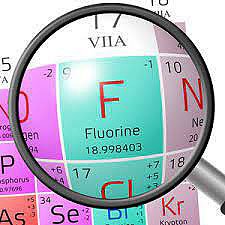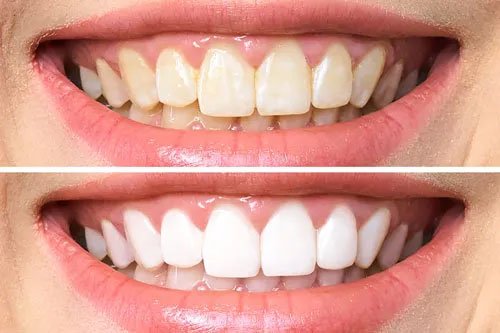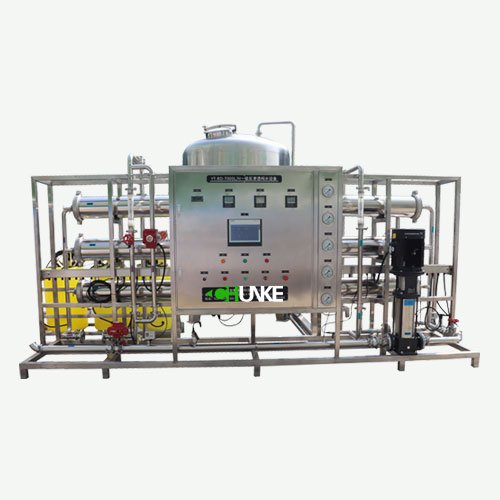We will explain Does Reverse Osmosis Remove Fluoride from your source water. How reverse osmosis system remove fluoride from drinking water? What must be fluoride level in drinking water. How does reverse osmosis filters work? All this question will be replied in our article. Now, you get one cup of coffee and read our article.

First we explain what is reverse osmosis ro system.
What is Reverse Osmosis RO?
Reverse Osmosis works by using a high pressure pump to increase the pressure on the salt side of the RO and force the water across the semi-permeable membrane, leaving almost all (around 95% to 99%) of dissolved salts behind in the reject stream. The amount of pressure required depends on the salt concentration of the feed water. The more concentrated the feed water, the more pressure is required to overcome the osmotic pressure.

Here, we show schematic presentation of ro system. If you understand how does reverse osmosis water filtration systems work, it is easy to understand how reverse osmosis membrane remove fluoride from tap water or deep-well, borehole water. And also, you get idea, how it is healthy to drink reverse osmosis water.
How does Reverse Osmosis Water Filtration System Work?
Before going to deep details on “Does Reverse Osmosis Remove Fluoride”, we check reverse osmosis plant flow diagram. In this animation, you can see that water goes to pretreatment filters, semipermeable reverse osmosis membrane and gain drinkable fresh water.
What is Fluoride?

Fluoride is a kind of chemical present naturally in groundwater. It is a charged ion found in many natural minerals and rocks. Since it dissolves readily in water, has no odor or taste, and has no visibility in a solution, it is safe for human consumption in low quantities. However, in some cases, groundwater has large amounts of fluoride, which can be toxic to health. With reverse osmosis water purification, it is possible to remove excessive fluoride from water.
Our article “Does Reverse Osmosis Remove Fluoride” will explain what fluoride level in water should be and how to remove fluoride from drinking water by RO System.
What should be Fluoride Level in Drinking Water?
An optimal level of fluoride in drinking water provides enough fluoride to prevent tooth decay in children and adults while limiting the risk of dental fluorosis, which is the only unwanted health effect of community water fluoridation. Dental fluorosis is a change in the appearance of the dental enamel that occurs in children whose teeth are forming under the gums. The risk of dental fluorosis increases as children ingest higher levels of fluoride. The most common impact of fluorosis is faint white spots on teeth that usually only a dental professional would notice.
National survey data show that prevention of tooth decay can be maintained at the recommended level of 0.7 milligrams of fluoride per liter of drinking water. This recommended level updates and replaces the previously recommended range of 0.7 to 1.2 milligrams per liter.
What is Fluoride Level For Drinking Water for World Health Organization?
“Does Reverse Osmosis Remove Fluoride” article just give you idea as regards to national standards for level of floride in drinking water. We are thinking that the most appropriate authority to apply for it is WHO (World Health Organization). From WHO Fluoride in Drinking Water Publication, we get this information. For original document, please click the link: WHO Fluoride Level in Drinking Water.
In 1984, WHO conducted an extensive review and found that there were insufficient data to conclude that fluoride produces cancer or birth defects. In addition, WHO noted that mottling of teeth (i.e., dental fluorosis) is sometimes associated with fluoride levels in drinking-water above 1.5 mg/l and crippling skeletal fluorosis can ensue when fluoride levels exceed 10 mg/l. A guideline value of 1.5 mg/l was therefore recommended by WHO as a level at which dental fluorosis should be minimal (WHO, 1984).
The 1.5 mg/l fluoride guideline value that was set in 1984 was subsequently re-evaluated by WHO and it was concluded that there was no evidence to suggest that it should be revized (WHO, 1996, 2004). The 1.5 mg/l guideline value of WHO is not a “fixed” value but is intended to be adapted to take account of local conditions (e.g. diet, water consumption, etc.).
What Happened If We Drink High fluoride Level Water?
Fluoride Effects on teeth in drinking water
The beneficial and the detrimental effects of fluoride naturally present in water were well established by the early 1940s. High levels of fluoride present in concentrations up to 10 mg/l were associated with dental fluorosis (yellowish or brownish striations or mottling of the enamel) while low levels of fluoride, less than 0.1 mg/l, were associated with high levels of dental decay, although poor nutritional status is also an important contributory factor.

Concentrations in drinking-water of about 1 mg/l are associated with a lower incidence of dental caries, particularly in children, whereas excess intake of fluoride can result in dental fluorosis. In severe cases this can result in erosion of enamel. The margin between the beneficial effects of fluoride and the occurrence of dental fluorosis is small and public health programmers seek to retain a suitable balance between the two. If you have yellowish and brown tooth problem, we suggest you find nearest health and human services.
Fluoride Skeletal effects

Although there are a large number of epidemiological studies available, the data are such that it is difficult to determine a clear exposure–response relationship. One possible feature of fluorosis is bone fracture, although some studies have reported a protective effect of fluoride on fracture. In an epidemiological study in China the relationship between fluoride intake via drinking-water and all other sources, and all fractures, followed a U-shaped dose response with higher rates of fracture at very low intakes below 0.34 mg/l and high intakes above 4.32 mg/l (total intake 14 mg per day). It was concluded by the IPCS that for a total intake of 14 mg per day there is a clear excess risk of skeletal adverse effects and there is suggestive evidence of an increased risk of effects on the skeleton at total fluoride intakes above about 6 mg per day (IPCS, 2002).
Cancer

Studies of occupationally exposed populations, primarily from aluminum smelting, have reported an increased incidence of, and mortality from, lung and bladder cancer and from cancers in other sites. However, the data are inconsistent and in a number of studies the results can be more readily attributed to exposure to other substances than fluoride. There have also been a significant number of epidemiological studies examining the possible association between various cancers and exposure to fluoride in drinking-water. However, in spite of the large number of studies conducted in a number of countries, there is no consistent evidence to demonstrate any association between the consumption of controlled fluoridated drinking-water and either morbidity or mortality from cancer.
Other possible health effects
A number of epidemiological studies have been carried out to examine other possible adverse outcomes as a consequence of exposure to fluoride, either from drinking-water or as a consequence of occupation.
Studies on the association between exposure of mothers to fluoride in drinking-water and adverse pregnancy outcome have shown no increased risk of either spontaneous abortion or congenital malformations.
No reasonable evidence of effects on the respiratory, haematopoietic, hepatic or renal systems have emerged from studies of occupationally exposed populations that could be attributed specifically to fluoride exposure. In addition, such studies have failed to produce convincing evidence of genotoxic effects.
The majority of fluoride is excreted via the kidneys (USNRC, 1993). Thus it is reasonable that those with impaired renal function might be at greater risk of fluoride toxicity than those without. In discussing this point, WHO (1996) 34 Fluoride in Drinking-water concluded that the data were too limited to permit any quantitative evaluation of possible increased sensitivity due to impaired kidney function.
Acute effects
A number of overdosing incidents have occurred, mostly in small water supplies, that practice artificial fluoridation. With well-designed fail-safe equipment and working practices overdosing incidents can be avoided. Where incidents of acute intoxication have been reported following overdosing in water supplies, fluoride levels have ranged from 30–1,000 mg/l (Peterson, 1988). To produce signs of acute fluoride intoxication, it is estimated that minimum oral doses of at least 1 mg fluoride per kg of body weight are required (WHO, 1996). Indeed, such doses could be expected from water with a fluoride content of approximately 30 mg/l.
How does Reverse Osmosis Remove Flouride from Your Water?
The amount of fluoride and other contaminants that the reverse osmosis system removes from the feed water depends on the quality of its membrane and your water quality . But in general, a regular RO system membrane works best for fluoride filtration. It can remove nearly 80% to 90% fluoride from your drinking water. This is why reverse osmosis systems are ideal for those who specifically want to remove fluoride and other contaminants from water.
Reverse osmosis, or RO, is a common form of water purification. RO uses a semi-permeable membrane that has pores large enough to allow water molecules to pass through but small enough to block other types of molecules like Fluoride. When pressure is applied to water on one side of the membrane, water molecules are forced through to the other side of the membrane, producing pure water. Contaminants, for example Fluoride, are essentially filtered out by the process. RO works well to remove most common contaminants.

How can I Understand my Water Fluoride Level?
If you are not familiar to chemistry and if you do not have some laboratory equipment, there is one way for you to understand flouride level in your water. It is get one bottle of water and send it to your local Test Laboratory and get the result.
If I See my Fluoride Level is High, What should I Do ?
In market there a lot of small undersink type reverse osmosis system, you can buy one good quality. But if you need bigger capacity, maybe it is for your apartment, small community or business, you can contact us for commercial reverse osmosis system and for larger capacity industrial reverse osmosis system.
Our engineering team provide best solution for you.

